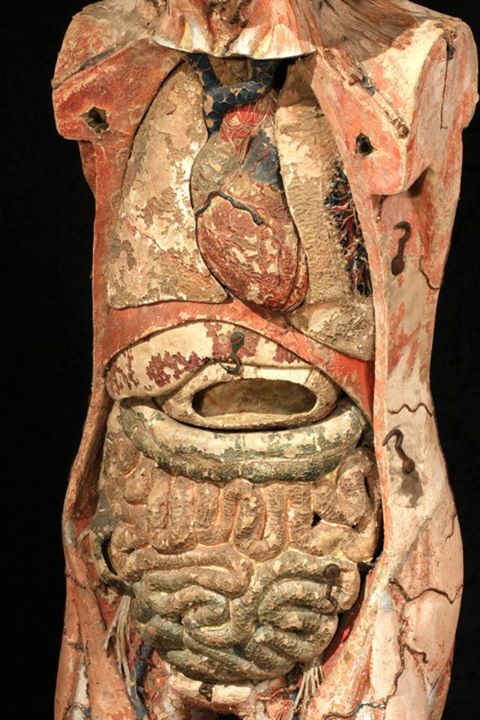Bodies–they have always been something of a problem. Even when in good working order, the body can be cumbersome, messy, demanding, and unpredictable. It runs down; it gets ill; it needs constant attention. Eventually, the body dies, but these adventures are far from over. Where do you put a dead body? Burial arose in part to combat the spread of disease, but death rituals vary with climate and geography. You can’t bury your dead in the frozen ground of Tibet, nor can you build a pyre where no trees grow for use as fuel. How we deal with bodies is therefore culturally specific, intrinsically personal–and yet, the body is also the epicenter of all medicine, and the medical body has problems all its own.
There are practical concerns. Bodies decay–and quickly. In a new exhibit here at the Dittrick Museum, we will be looking at the work of 18th century artist Jan Van Rymsdyk. He illustrated the anatomies of deceased pregnant women for William Hunter and William Smellie. While sometimes hard to look at, these images are still compelling. The careful renderings were only possible, though, because Van Rymsdyk worked quickly, as famed for his speed as for his remarkable rendering. Even so, steps had to be taken to make the body as stable as possible–wax would be inserted in the veins and other preparations might be made to preserve color and texture. Today, bodies are preserved prior to dissection, but embalming chemicals often discolor the inside of the body (in addition to creating a very unpleasant and unnatural smell). Dissecting these quickly deteriorating remains was so problematic (and containment and storage so hard to come by) that models were made instead of wax or even of papier mache like the Museum’s own Auzoux model (pictured here). And these are merely the physical problems with the medical body–there are also ethical and philosophical ones
be inserted in the veins and other preparations might be made to preserve color and texture. Today, bodies are preserved prior to dissection, but embalming chemicals often discolor the inside of the body (in addition to creating a very unpleasant and unnatural smell). Dissecting these quickly deteriorating remains was so problematic (and containment and storage so hard to come by) that models were made instead of wax or even of papier mache like the Museum’s own Auzoux model (pictured here). And these are merely the physical problems with the medical body–there are also ethical and philosophical ones
In Dissection: Photographs of a Rite of Passage in American Medicine 1880-1930, John Harley Warner and James Edmonson (curator of the Dittrick Museum) talk about medical cadavers and their significance to medical students, who often took photographs of themselves with the bodies they dissected. Such a practice is not allowed today, and is considered a violation of privacy, indecent.
But the history of dissection in its public and private nature goes back much further, to the Father of Dissection, Andreas Vesalius. In 1543, Vesalius conducted a public dissection of the body of Jakob Karrer von Gebweiler, a notorious felon. The bones were re-articulated after, and are still on display. Much later, in the 18th century, the body of Charles Byrne, the “Irish Giant,” was procured against his final wishes by John Hunter, the famed 18th century surgeon. This body, too, remains on display at the Hunterian Museum in London (though it is still much contested). Resistance to–and fascination with–this treatment of remains continues today with the Body Worlds exhibit, a point made eloquently by James T H Connor. At what point does science become spectacle? Or, as a medical school dean recently asked me, has dissection of the cadaver outlived its usefulness?
These are all good questions, and there are no easy answers. What we can learn from medical history, however, is the context and the contours of a long-standing relationship with the organic matter making up our own bodies. From mourning to medical exploration, the body is still primary, a touchstone that we all share. The Dittrick Museum will be looking into the complicated history of anatomy art beginning Jan 20th (and a talk from Lucy Inglis on February 20th). Additionally, Cleveland’s Museum of Contemporary Art (MOCA) will be exhibiting a show called DIRGE: Reflections on Life and Death starting in March. We hope that you will join us as we examine our relationship to bodies, in all of their medical and historical (and personal) complexity.



